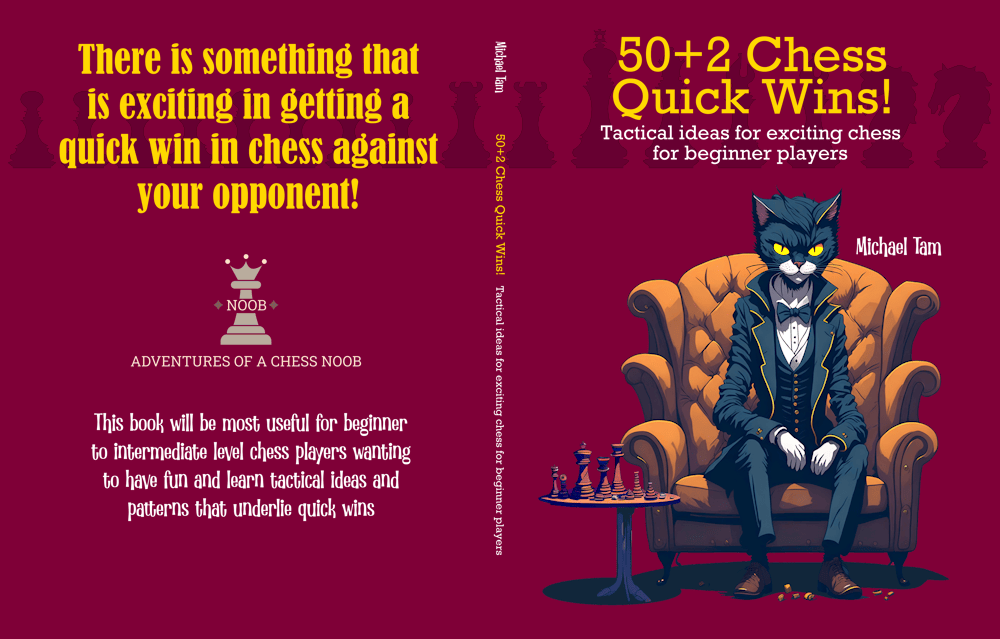
Chess Tactics | Traxler Counterattack Checkmate line to know! 🤩👍
#tactics #traxler #romantic
One of my goals starting last year and continuing into 2025 is to better learn the many and varied lines in the Traxler Counterattack. It was first promoted and described by Karel Traxler (1866-1936), a Catholic priest and chess puzzle composer from the Kingdom of Bohemia, now Czechia. The Traxler Counterattack is, in my opinion, the most beautiful response by Black to White’s Knight Attack and attempt at the Fried Liver Attack. It is a Romantic line that deserves to be played for the sake of aesthetics and fun, even though it isn’t the most accurate. If you think that “winning with style” is a higher goal than just winning, then the Traxler is for you! 🤩👍
The Traxler Counterattack (1. e4 e5 2. Nf3 Nc6 3. Bc4 Nf6 4. Ng5 Bc5) can be a bit complicated as there are quite a range of moves that White can respond with. As such, it can take some time to gain confidence and familiarity. Recently, I played two games of the Traxler Counterattack where White responded in the same way. Within this line, there is a rather neat checkmate tactic that is worth knowing. I managed to spring it on my opponent in both games. Let’s go take a look!
![]()
* * *
![]()
The Traxler Line Variant of Interest
In these games, the variant in the Traxler begins where White captures the sacrificial bishop (5. Nxf7 Bxf2+ 6. Kxf2), and correctly parks their king on the g1 square against check (6… Nxe4+ 7. Kg1).

![]()
Black’s next move is obvious (7… Qh4!), a wayward queen that is immediately threatening checkmate with Qf2! In this position, White has two options that keep the equality, (8. g3) and (8. h3), and only (8. g3) intuitively looks viable. In the Lichess community database, (8. h3) was almost never played – in only about 1 in 500 games from the position.
In the position, White’s most common response is to defend the f2 square with their queen, and to counterattack down the f-file with their queen. That is, with (8. Qf3) or (8. Qf1). Together, these two moves make up 52% of responses from the position, are mistakes, but do give White some tactical chances, so it is well worth the Traxler player to explore!

![]()
Game 1: 8. Qf1?
Chronologically, I played this game first where White responded with (8. Qf1?). During this game, I couldn’t quite remember the best way to play the position, despite knowing that Qf1 was a mistake. It’s worth noting then that the most forcing immediate tactic is (8… Rf8!). On reflection, it makes a lot of sense as (i) the rook is no longer hanging and a target on h8, (ii) it pins White’s f7-knight to the queen on the f-file, and (iii) effectively counterattacks and controls the f-file.
In the game, I played (8… d5?), which is a mistake/blunder in the position, even though the move is a strong tactic in many Traxler positions. My logic in the game was that I often don’t mind losing the corner rook as it deactivates White’s knight, and in fact, White can often blunder a checkmate line by the loss of tempo with Nxh8!
The idea behind d5 is that it disconnects White’s bishop and knight, and it forces White to respond, winning tempo. It also opens the light square diagonal for my bishop, unleashing yet another attacker onto White’s kingside. Indeed, we see this playing down the line I predicted: (9. Bxd5) is White’s best move but notice that the bishop no longer defends the f1-queen. Committed in my (inaccurate) tactical approach I developed my bishop (9… Bg4?) which Stockfish again doesn’t like, preferring Rf8 again. However, with the g8-rook looking like a tempting morsel, White finally captures (10. Rxh8?), and as expected, it’s a serious mistake!
That loss of a single move allowed now for my (10… Nd4) and suddenly, I have four pieces attacking White’s king! Although White is up 8 points of material and objectively ahead, Black is pragmatically winning with a win likelihood of White 27% vs Black 69%. In the position, White must find their single good move, (11. Nc3!) which is hard to see! In effect, White needed to hold the tension by defending the critical e2 square: if White allowed Ne2+, it looked like White would be forced to trade away their queen for minor pieces!
Instead, White played the natural looking (11. Qf7+??) which was a blunder. Although it’s technically [0.00], this is only from the perspective that White’s best option is to force a draw by three-fold repetition. Against the scary looking check, I saw in the game that after (11… Kd8), White was out of attacks!
My Nigerian opponent spent almost two-and-a-half minutes considering their next move. Everything visibly looks bad or looks to obviously lead to repetition. Finally, they played (12. Bxe4??) capturing a “hanging” knight, but this blunders [-M2], and is a checkmate pattern on the back rank worth remembering down this line! First, we have (12… Qe1+!) and White’s queen is forced to block the check with their body (13. Qf1). But now, with their queen pinned, the knight gives the coup de grâce with the semi-smothered mate, (13… Ne2#)! Beautiful! 😚🤌

![]()
Game 2: 8. Qf3?!
In this second game, an unrated match of rapid very soon after game 1, my opponent played (8. Qf3?!). I’d already analysed the first game by this point and knew that Rf8 was probably the correct move. However, with White’s queen on the juicy f3 square, I decided to play (8… Nd4) first. Even though it wasn’t the most accurate move, it’s rarely a mistake to chase the opponent’s queen with development in the opening!
And in a sense, this tactical heuristic bore out! White decided to play an undercalculated tactic starting with (9. Nd6+??), a blunder. I think that they probably thought that they had a mating attack, but all this achieved was to lose their knight. After (9… cxd6 10. Qf7+), I sidestepped my king, just like in game 1 with (10… Kd8), and White is out of attacks!
Moreover, notice that the attack structure on White’s back rank has been put into place with the knights and the queen! What I needed to do was to try to remove White’s c4-bishop as the defender of that critical e2 square. So, I attacked the bishop with (11… b5) and tragically for White, they attempted to counterattack with (12. d3??), which closed White’s bishop’s defence of the e2 square.
And so, we have the same checkmate pattern in the back rank: (12… Qe1+!) check; White must block the check with their queen, pinning it to the king (13. Qf1); and the knight delivers the killing blow with a semi-smothered checkmate (13… Ne2#!). Good game, GG!
![]()
* * *
![]()
The big takeaway is that the Traxler Counterattack is an enormously fun and tactical opening to learn, with many beautiful attacking lines to explore! If you want to win with style against White’s Knight Attack in the Italian Game and to turn the tables on a Fried Liver Attack player, it’s one of the best choices you can make!
Learn more about the Traxler Counterattack, its refutation, and variants in “Become a Chess Assassin! Learn to play the best chess opening attacks.”
Note: earlier in the week, my mate @benhunt72 of the “Chess Boot Camp” club and YouTube channel published a review of the book! Check it out and subscribe to his channel! 🤩👍
![]()




